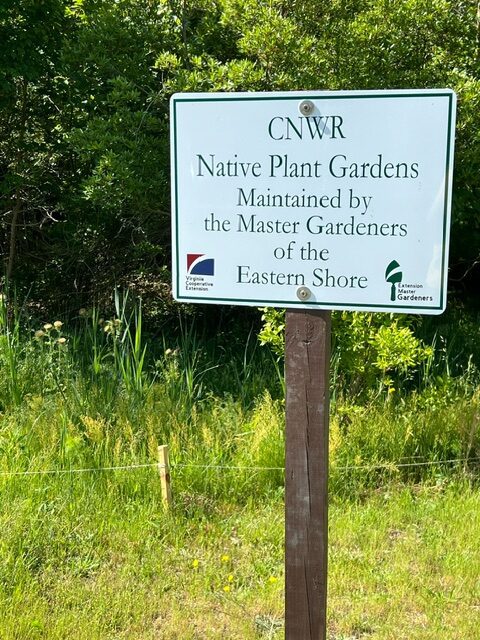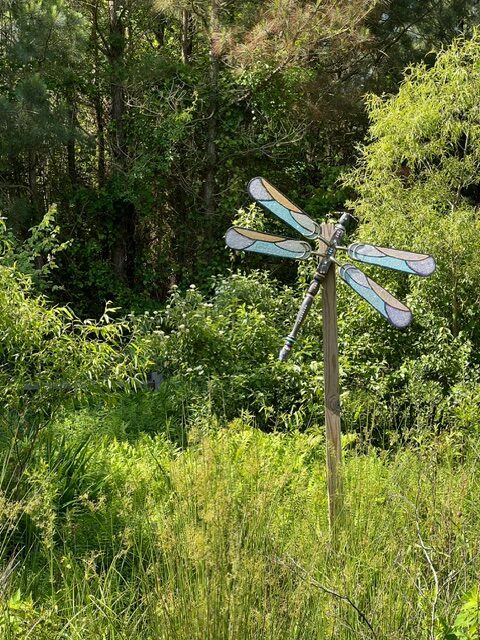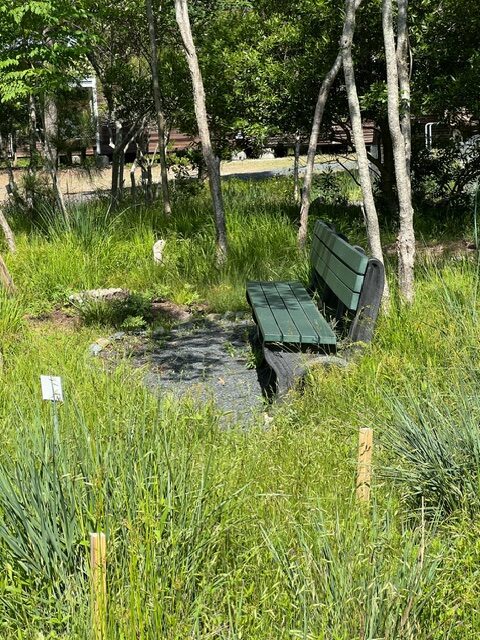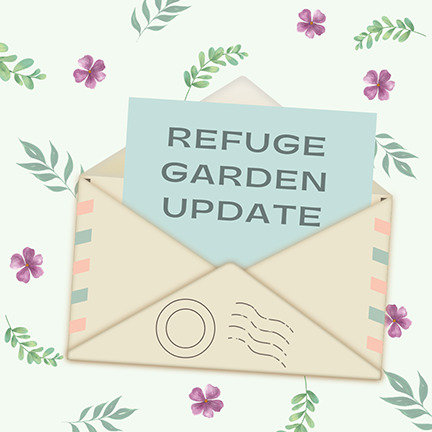Lots of excitement last week when a monarch caterpillar was spotted on a milkweed plant in the Pollinator Garden…only 4yrs in the making! Trouble starts when baby bunnies get hungry for the tender milkweed sprouts…
We, meaning Amalya Dixon, set up a dedicated calendar for MG volunteers to sign up to talk to visitors about native gardening and why it is important to plant native at home. Thanks to Laurel Wilkerson, Director of Visitor Services for the U.S. Fish and Wildlife Service and ESVMG’s liaison with Chincoteague National Wildlife Refuge (CNWR), we were able to set up a display table next to the picture windows overlooking the gardens in a cool and mosquito free environment. Our goal is to fill every Friday with one or two MGs to talk to visitors Friday mornings from 10-12 through the summer. Please consider signing up to help.
Laurel Wilkerson also informed me a couple days ago that the Natural Heritage Program (Va Dept of Conservation & Recreation) is looking to meet on the Refuge in late June or early July to revive the Plant ES Natives campaign, kudos to Laurel! The gardens should be in full bloom by then. Perfect timing.

Refuge volunteer Ernie again burned wire grass along the path from the parking lot to the Rain Garden. Thank you, Ernie! He and his wife joined Master Gardeners Diana Schaney, Jomi White and myself, along with Chase Sands, CNWR, for Earth Day at the Salisbury Zoo in April.
MG Claude Taylor is challenging the mosquitos when cutting Greenbriar last week around the American holly trees just south of the bird garden. This gives naturally occurring holly trees a chance to grow and develop as well as other naturally occurring plants in the area include water oak, red maple, and others. We plan on adding berry-bearing shrubs in the fall to draw in more songbirds.
Have you seen the thistle patch we marked off? Their blooms are quite beautiful, and as a group they make a statement. They came up naturally after the phragmites was cut back 2 years ago.


We reworked the watering system this year and now have an automatic sprinkler in the pollinator garden. We will monitor our success through the summer.

Another change was to convert the wildflower bed into a native grass demonstration garden. I think 4 years of marginal success in developing a wildflower bed was a noble effort, but obviously not the right plants for the location.
Enjoy the summer.
Ray Schaney, Refuge Gardens Lead
If you are a person with a disability and desire any assistive devices, services or other accommodations to participate in this activity, please contact Theresa Long Pittman at 757-787-1361 ext. 14 during business hours of 8:30 a.m. and 5 p.m. to discuss accommodations 5 days prior to the event. *TDD number is (800) 828-1120.
Virginia Cooperative Extension programs and employment are open to all, regardless of age, color, disability, gender, gender identity, gender expression, national origin, political affiliation, race, religion, sexual orientation, genetic information, veteran status, or any other basis protected by law. An equal opportunity/affirmative action employer. Issued in furtherance of Cooperative Extension work, Virginia Polytechnic Institute and State University, Virginia State University, and the U.S. Department of Agriculture cooperating. Edwin J. Jones, Director, Virginia Cooperative Extension, Virginia Tech, Blacksburg; M. Ray McKinnie, Administrator, 1890 Extension Program, Virginia State University, Petersburg.

